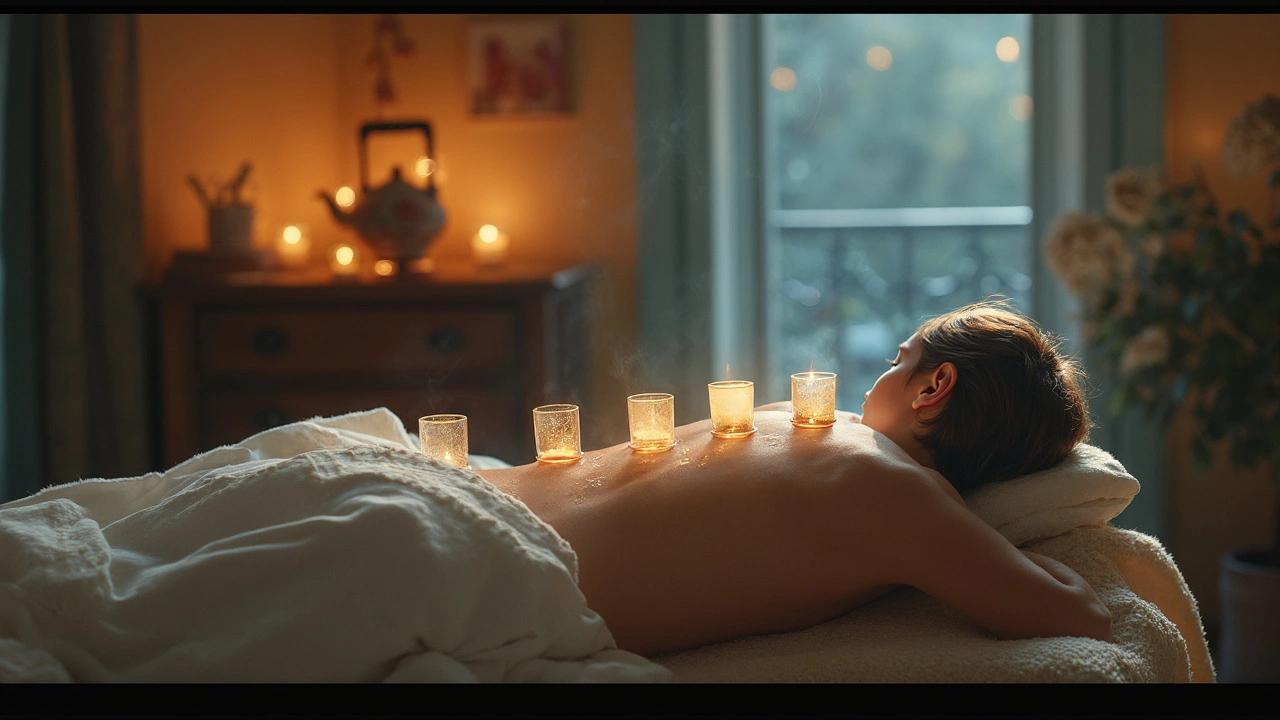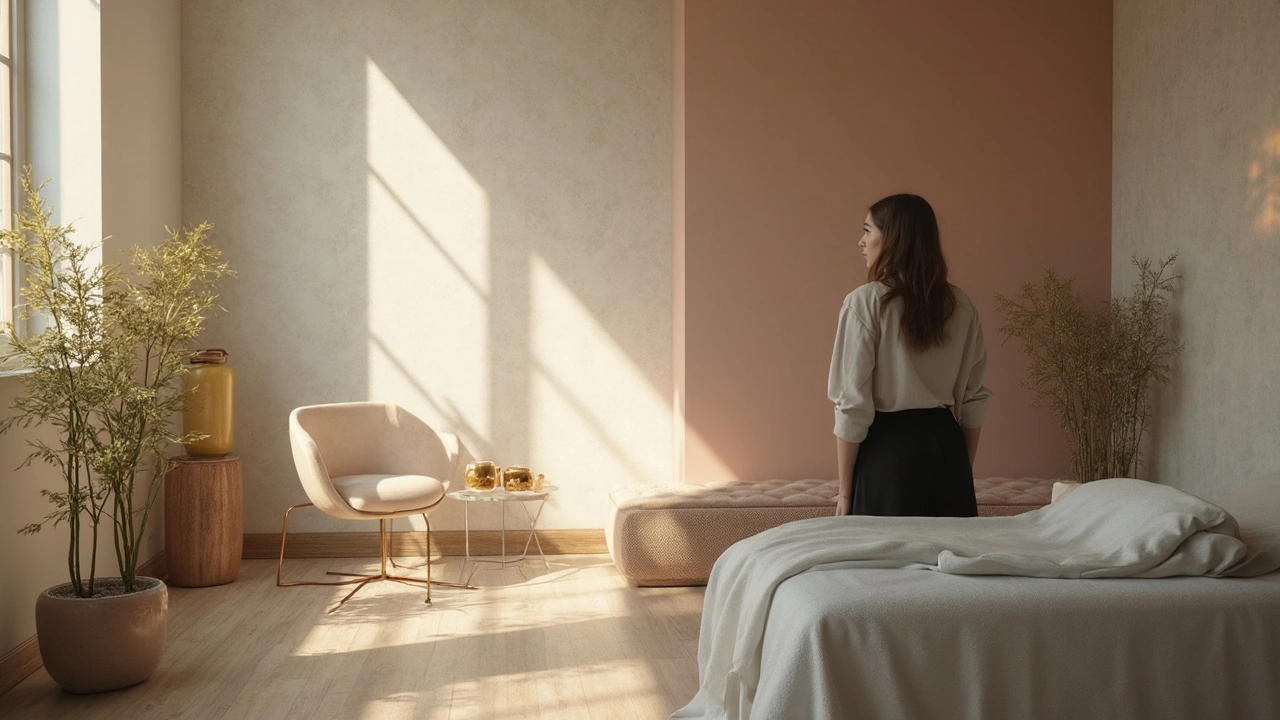Cupping Therapy: A Unique Way to Heal the Body
 Mar, 9 2025
Mar, 9 2025
Cupping therapy might seem a bit mysterious with all those glass cups and fire involved, but it's really quite straightforward. Originating in ancient China, it's a method believed to stimulate the flow of energy or 'qi' in the body by creating suction on the skin.
So, what's the big deal with cupping? Well, people say it helps with pain, inflammation, blood flow, and relaxation. It's a bit like a reverse massage—where instead of pressing into your muscles, it gently pulls them upwards.
Interested in giving it a go? There are a couple of different methods to choose from. The most traditional involves briefly heating the air in a cup before placing it on the skin. Suction cups made from silicon or rubber are now also available for a fire-free experience.
What Is Cupping Therapy?
Cupping therapy is an ancient form of alternative medicine that has been used for thousands of years, with its roots tracing back to ancient Chinese, Egyptian, and Middle Eastern cultures. Basically, it involves placing cups on the skin to create suction. This suction is believed to enhance blood flow, alleviate pain, and promote muscular relaxation.
There are two common types of cupping: dry and wet. Dry cupping involves simply placing the cups on the skin for about 5 to 10 minutes, while in wet cupping, small, controlled skin incisions are made before applying the cups, with the idea of drawing out blood that's considered stagnant or harmful.
Originally, cups were made of bamboo, ceramics, or animal horns, but today, most therapists use glass, silicone, or even plastic cups. There's a variety of methods to choose from, including fire cupping, where a flammable substance is briefly lit inside a cup to create suction.
How Does Cupping Work?
The science behind cupping therapy is still a mix of ancient beliefs and modern theories. It's thought that the suction promotes healing by drawing blood to the affected area, which helps to reduce pain and inflammation. Some modern supporters link it to the theories of acupuncture or even as a form of deep tissue massage, recognizing its potential to increase blood circulation.
Cupping Around the World
Today, cupping is used globally, from elite athletes to weekend warriors looking for pain relief. Remember the 2016 Olympics when all eyes were on back marks rather than medals? That was cupping! And while science mostly tags along with anecdotal evidence, the growing number of practitioners and success stories keep it a popular choice.
If you’re new to this therapy, it’s vital to find a trained and experienced practitioner, as improperly administered cupping can lead to bruising, burns, or even infections. Always make sure your therapist follows hygiene protocols to ensure a safe and beneficial experience.

Benefits of Cupping
So, what's all the buzz around cupping therapy? For starters, it's known to offer a range of health benefits that might make it worth a try for those looking to boost their well-being. From athletes to stressed-out office workers, folks from all walks of life are reaping the perks.
Pain Relief
One big reason people turn to cupping is for pain relief. Imagine you've had a long day and your back is just killing you. Cupping therapy might provide the relief you need by improving circulation to sore or tight muscles. Research suggests that it helps with chronic neck pain and lower back pain, making it a favorite for many people.
Boosting Circulation
Improving blood flow is another key benefit. The suction created by the cups increases circulation in the treated area, which can help promote healing and reduce inflammation. It's like giving a little extra help to your body to function better.
Relaxation and Well-being
Beyond physical benefits, cupping therapy can also contribute to your mental health. By encouraging relaxation, it may help reduce stress. Plus, let's be honest—spending some time focusing on yourself never hurts!
Skin Health
There are claims that cupping can improve skin health by helping to clear out toxins and improve the appearance of cellulite. While scientific backing is still growing, many users have noted smoother, healthier-looking skin as a side effect.
| Benefit | Details |
|---|---|
| Pain Relief | Helps with back and neck pain |
| Boosted Circulation | Improves blood flow and reduces inflammation |
| Relaxation | Reduces stress and promotes well-being |
| Skin Health | May improve skin appearance |
While cupping therapy seems promising, it’s always a good idea to consult with a healthcare professional before diving in, especially if you have any medical conditions. Just remember, like all forms of alternative medicine, results can vary from person to person.

How Does It Work?
The whole idea behind cupping therapy revolves around improving circulation and getting your body’s juices moving properly. When those cups are placed on your skin, they create a vacuum effect that gently pulls the skin and underlying tissues upward.
What Happens During Cupping?
Now, you might be wondering what’s actually going on underneath the skin. As the skin is drawn into the cup, the suction pressure increases blood circulation. This surge of blood flow can help relieve muscle tension, promote cell repair, and in some cases, aid in the regeneration of blood capillaries.
- Dry cupping is the most common form, involving only suction. It’s simply about creating a vacuum.
- Wet cupping involves a slight incision before placing the cup, aiming to draw out a small amount of blood. This method is said to remove toxins.
The Science Behind It
Some folks believe that this ancient technique can influence the flow of qi in the body, a crucial concept in traditional Chinese medicine. And while not all scientists agree on the qi theory, there’s supporting research that suggests cupping therapy might activate the release of the body’s natural pain-killers, like endorphins.
Also, it’s thought that alternative medicine options like this may induce a relaxation response, helping to calm the nervous system, which fits well with its reputation for providing relief from stress and anxiety.
